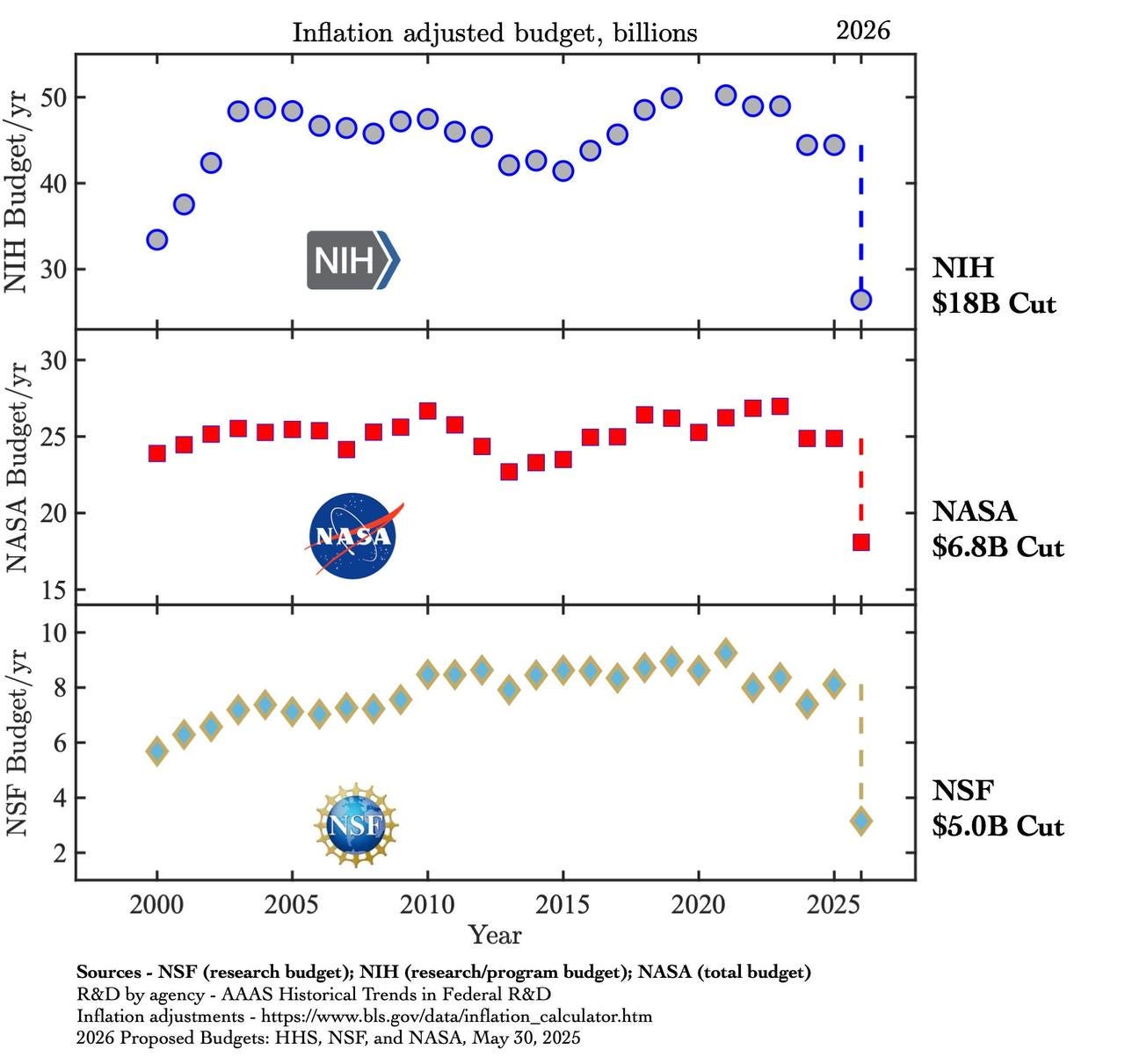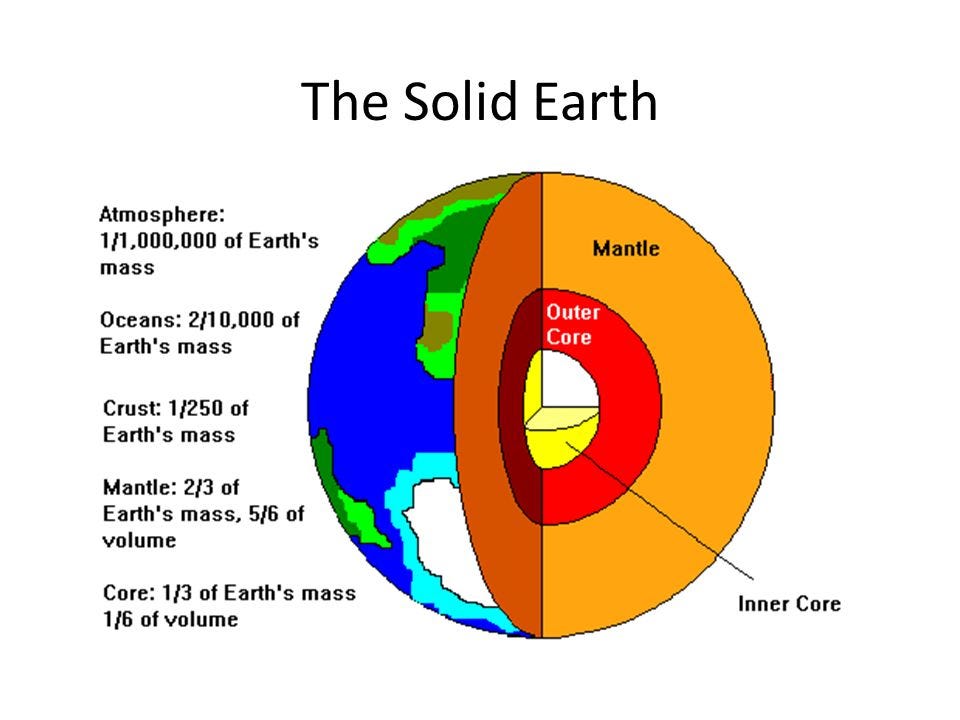The modern research lab is run at a megacorp tech company where they have, essentially, unlimited resources to work on a wide variety of topics as long as they have good computer skills. The labs are set up between pure and applied research (e.g., Microsoft Research, Deep Mind), applied research that is likely profit seeking (e.g., Google.x), and then the development teams that industrialize/commercialize this work. This isn’t new, but this mode has shifted to be less application in many cases (e.g., quantum computers promise a lot but do very little although the promise of their abilities is worth the effort). And while those labs have been built at companies that originally may have nucleated at a university (like Google at Stanford) they are now, in some cases, being built using venture capital. For example, companies like Mira Murati’s new Thinking Machines Lab which has raised 2 billion dollars in less than six months. They also include innovative new places like the Astera Institute which offers highly competitive salaries to highly competitive researchers to simply pursue their own research endeavors. Astera is railing against the establishment trying to both innovate science funding as well as science publishing having opted out of publishing due to the predatory nature of publishers even premier ones and the lack of progress, scientific interaction, and the insufficient review process, that is produced by authoring scientific publications today.

The ideas behind building labs like this are relatively simple. Directing pure and applied research in directions related to a company’s interest will eventually produce new ideas that can be turned into billion dollar products. These research products don’t necessarily need to be integrated into the main lineup of a company’s efforts. They can instead be spun off into a startup (e.g., Silurian, the company behind the Aurora foundational model of the earth’s climate and weather, was originally built inside of Microsoft Research). This is allowed as the parent company recognizes that this helps to create a healthy ecosystem that they will likely profit from in the long run.
This is not new to Silicon Valley and is, in some sense, was how Apple Computers got started. Steve Wozniak was working at Hewlett Packard when he was building the first Apple computer prototype. When he realized that HP may want ownership of his technology, he went to HP and asked if they wanted it and they said no allowing Woz and Steve Jobs to start Apple Computers. And this was part of the company culture of Hewlett Packard and is known, in part, as The HP Way. Hewlett Packard famously allowed their employees to work part-time on their own pet projects. This came with the understanding that Hewlett Packard would get first dibs on any technology that came from these investigations. And this led to the creation of new markets worth billions of dollars based on innovative technology such as the ink jet printer. Like checkout this quote from the HP Way:
We encourage flexibility and innovation. We create an inclusive work environment which supports the diversity of our people and stimulates innovation… This is especially important in a technical business where the rate of progress is rapid and where people are expected to adapt to change.
But these AI labs have, essentially, taken these ideas and put them on steroids. And this isn’t just me talking. These labs below all have been founded in recent years, and you can see that they have all raised large amounts of money and these numbers are likely a serious underestimate of what has actually been raised in total. These numbers only reflect what I found when researching but I am confident there is more. And I certainly have not accounted for all of the various companies that are being built currently.
If the table above doesn’t render correctly, try opening in the browser instead of the substack app.
And if you think the topics these labs focus on is only related to AI, it is only for applications like ChatGPT or making pretty pictures, you should think again. Researchers in these labs have produced multiple ground breaking papers including research that won the Nobel Prize.
Below is a topic distribution in UMAP space of the topics of 3,703 papers published by authors working at the companies in the table above. I have used the SPECTER2 embeddings provided by the Semantic Scholar API to create vectors for every paper published in the subset that I sampled and then mapped these to 2D UMAP space. I then clustered them with a Gaussian mixture model and asked Claude Code to summarize the paper titles into a keyword or phrase. And the results are astonishing given the breadth of topics you see below.

Keep in mind, I have only focused on companies that are really famous in the current moment for their contributions to artificial intelligence. But note what a variety of topics these companies have covered including most of the topics you might find in university departments today such as physics and astronomy, planetary science, chemistry, genetics, biology and disease, and education. And this plot is definitely not comprehensive, I only downloaded a small subset of papers published by a small subset of these labs for this analysis (3703 papers). But there is a huge number of companies working in a variety of fields such as Terra AI in mineral exploration, Silurian in climate and weather, apic.ai who are building models to observe pollinators like bees, 44.01 who is changing how we sequester carbon, and this list continues.
I believe that this is going to, in some ways, take over the way research is done across academia. These large, privately funded research labs are already hoovering up talent across domains such as artificial intelligence and machine learning, geospatial intelligence, space travel, protein folding, and quantum computing. I expect that the domains that these companies are interested in will only expand and there will be more funding towards new topics such as critical mineral exploration, education, social science, and many other areas as we expand the resources, skills, and technologies that society needs in order to build a healthy and bright future.
Industrial research has long been a core component of the entire research initiative of humanity, however, these new AI labs have enabled a recent paradigm shift in how funding can be acquired and used for R&D compared to traditional funding avenues for academic researchers. And it doesn’t come at a better time when NIH, NSF, and NASA funding in the USA is at an all time low. And if you are in Europe or China, there will be network effects to what is going on in the USA science funding. There will be fewer partnerships with American scientists, fewer PhDs coming from top American schools, fewer new ideas to work on coming out of American universities, and over all less scientific opportunity at American research universities.
There are several traditional entry points to these private research communities like Stanford, Harvard, and MIT. Alternatively, nucleating startups to build your own environment or to get acquired is a way in as well. If universities want to remain relevant they should be doing their best to build these pipelines for their students because real research will be done less and less at the university because of the decline in funding and the expense of computing. Additionally, there is a deep need to do interdisciplinary work which can face unique hurdles when universities are split by their domains so severely given the traditional segmentation of university faculties/departments. I have been super fortunate to work on machine learning and data science topics at the Njord Centre for the Studies of the Physics of the Earth, where independence and interdisciplinary work is a core value, and so I see how valuable this can be.
I think that, in some ways, researchers need to come to the conclusion that things are changing and that there are wonderful opportunities on the horizon but we must think differently if we are to succeed. This is especially true in Europe which has a high concentration of green energy companies and healthy startup environments for scientists like in The Netherlands. We could build private research labs focused on developing the cutting edge that is necessary for us to reach a carbon neutral future across domains such as critical resource exploration, mining, producing critical materials in the lab, ocean science, natural hazards, and other topics. Building these technologies will help us build the future we want to live in. If we are not trying to explore these new research spaces being created by AI labs then we are destined to become irrelevant, chasing boondoggles in the darkness.
Are you a research scientist working at the interface of AI, robotics, and/or geosciences? Hit me up on LinkedIn.







